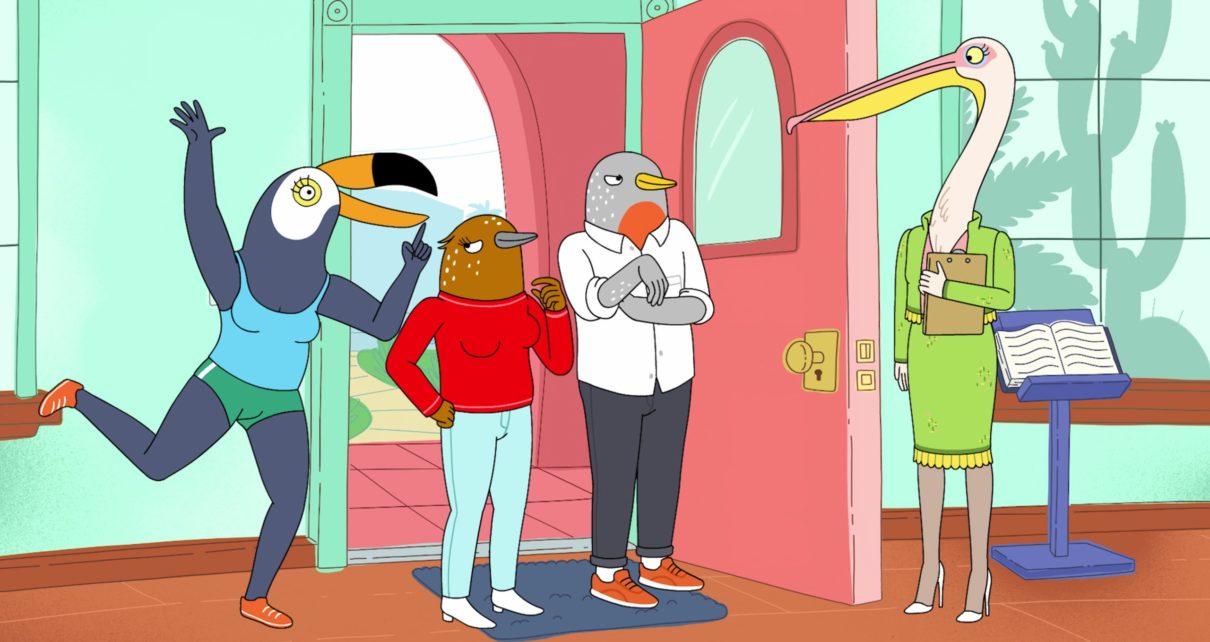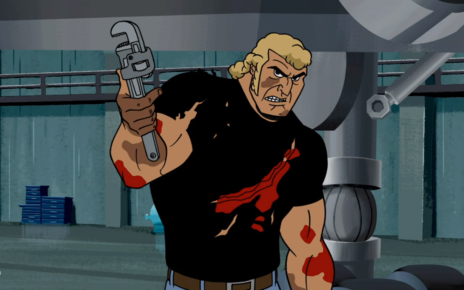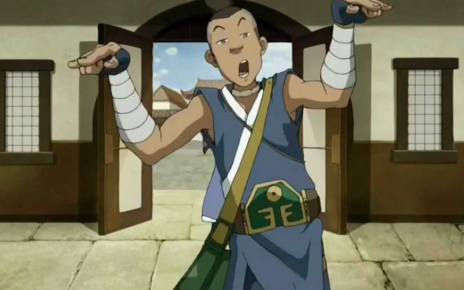When we first started writing about cartoons and animation, good pieces on the subject were few and far between. That’s changed over the past four (!!!) years, which in some ways makes finding the best journalism about cartoons to read even harder. Our reading list is long, as it should be, and it gets longer by the day. And once again, we’ve put one more list together to make yours longer, too.
Here are some of our favorite 2019 pieces of written analysis, reportage, argument, and feature writing on animation that The Dot and Line got to read, but had no part in publishing. (Full disclosure, though: some of us wrote some of them for other outlets.) We’ve highlighted some of our favorite things about each piece below. Enjoy, and thanks for tooning in.
Important Note! We read as much as we possibly can, but we’re neither perfect nor do we wish to live in a world filled with only our opinions. If you feel we missed a particularly awesome piece of writing (or just want to say hi), send us a note at thedotandline@gmail.com, and we’ll include it and quote you!
A Look Behind TV’s Most Relatable Gaming Story in Ages
“There are many stereotypes for black people on TV, and they don’t include Capcom games and having super knowledge for those kind of fighting games. It was really special for us to bring that to families or kids who grew up with those hobbies, but didn’t see themselves represented as liking those kinds of games,” explained Craig of the Creek storyboard artist Tiffany Ford in this piece from Ben Bertoli at Kotaku.
In ‘Toy Story 4,’ the Animators Pulling the Strings Reveal Woody’s Inner Life
“I knew from the very beginning that, this being a movie about relationships, I was going to be leaning on the animators’ acting very heavily to carry a lot of the emotion,” Toy Story 4 director Josh Cooley told Darryn King for The New York Times. “It really is like being a live-action director where you go and you talk to the actors. And in my case the actors are the animators.”
‘Tuca & Bertie’ Is Great TV. Why Didn’t Netflix Renew It?
Many pieces mourned the loss of Tuca & Bertie, one of the best shows of the decade, but this one by Estelle Tang of Elle cut to the heart of things: “Tuca and Bertie might be birds, but they are also pretty good approximations for human women in their late twenties and early thirties. They are imperfect and devoted BFFs, achievers of modest dreams, and makers of poor decisions. They are anxious and avoidant and sexy dorks, and they are there for each other no matter how many mundane tasks or difficult epiphanies they must weather.”
In Three New Animated Cartoons, Indigenous Characters Are The Young Stars
Mandalit del Barco, a correspondent for NPR West‘s Arts desk, covered this welcome representational trend with grace. “Media makers have always used the excuse ‘the Native population in the United States is statistically insignificant … there’s not a demand because you guys are so small,'” Crystal Echo Hawk, CEO of the media watchdog group IllumiNative, says in her piece. “But what this new research shows is that there is demand well beyond the Native population in this country.”
‘Your Name.’ director Makoto Shinkai weathers the storm
“I asked myself, ‘Should I make a film my critics will like,” he recalls, “or should I make one they’ll hate even more?’”
He decided on the latter.
Matt Schley‘s peek into the mind of Makoto Shinkai, director of Your Name. and Weathering With You, for The Japan Times is one of the most significant English-language interviews with the man.
Seth Green on ‘Robot Chicken’ season 10 and befriending George Lucas
The conversation Matt Patches of Polygon had with the show’s mastermind is definitely one for the fans.
StoryCorps: This Disney Animator Began to Doodle in an Internment Camp
“If I’m in front of a blank sheet of paper with a pencil, I find such solace,” Willie Ito, who worked on Lady and the Tramp, told Mia Warren of NPR‘s StoryCorps. More than an animation story, this short segment is a powerful reminder of our national shame and the creativity that was interned along with tens of thousands of Asian Americans in World War II.
Overlooked No More: Lotte Reiniger, Animator Who Created Magic With Scissors and Paper
Before Disney, Devi Lockwood‘s lede in The New York Times Overlooked No More obit series explains, there was Lotte, a filmmaker and animator ahead of her time who cut out figures to create “silhouettes for my playacting, constructing a little shadow theater in which to stage Shakespeare.”
B is for Bastard
While not strictly about animation, Brian Gresko‘s earthquake of a heart-breaker at Longreads—about a son discovering his dad isn’t his biological father—employs cartoons at its center to devastating effect.
The Hardest Thing I Ever Animated
Rebecca Alter and Brian Moylan deftly went deep in the weeds with this piece for Vulture that reminds us not just of the minutiae that makes great cartoons, but also how poignant and poetic some of these individual scenes were when they came together.
‘Dragon Prince’ season 3 review: heroes and fans fighting the same battles
This review by Samantha Nelson of Polygon did double duty of both critiquing The Dragon Prince‘s third season and wrestling with the allegations of workplace abuse levied against its showrunner Aaron Ehasz.
‘An American Tail’ Explores Bleak Immigrant Struggles That Still Resonate in 2019
At Vice, Rebecca Long asked Don Bluth about the grimness you’ll find in his films. He answered: “Now shall we manicure this and make it look like everything’s wonderful in America… and people are all good to each other? That’s certainly not real.”
‘Steven Universe Future’ is doing something TV shows don’t do
Here Tasha Robinson of Polygon beautifully captured what makes Steven Universe Future so special: “[Rebecca] Sugar’s team seems to be invested in questions that fantasy stories don’t often ask: Can the personal stakes in peacetime be as fraught and meaningful as the larger stakes in wartime?”
Tragedy in an Animation Utopia: Picking Up the Pieces in the Wake of a Japanese Massacre
Taking stock of a tragedy is one of journalism’s most difficult tasks, and Scott Johnson and Patrick Brzeski of The Hollywood Reporter approached the arson that rocked Kyoto Animation with all the dignity that its victims warranted.
The Shameless Nepotism Section
Live Action Anime Reboots: Why Anime Becoming Cool Means More Reboots
Beware ye: anime is cool now, which means Hollywood is going to be ruining it for the next 20 years. For Thrillist, D+L editor in chief John Maher investigates.
Genndy Tartakovsky’s ‘Primal,’ streaming on Adult Swim, deserves an Oscar
Everything about animation at the Academy Awards is dumb and bad. You know what wouldn’t be? Giving Primal the Oscar. For Polygon, D+L editor in chief Eric Vilas-Boas speaks the truth.
Women Are Taking Over Fox’s Sunday Night Cartoons. What Took So Long?
For Vulture, D+L web editor Sammy Nickalls moderated a roundtable of rising women creators in animation to discuss the state of the industry’s boys’ club bullshit and how they’re knocking the damn walls down.
The Bonus Section
How Did This (Cartoon) Get Made?
Infinity Train creator Owen Dennis shows the world how an animated episode is made in this neat flowchart.
In the mood for a deep dive? Check out our roundups from prior years:
The Best American Animation Writing 2018
The Best American Animation Writing 2017
The Best American Animation Writing 2016
Thanks for reading The Dot and Line, where we talk about animation of all kinds. Don’t forget to follow us on Twitter and sign up for our newsletter.





